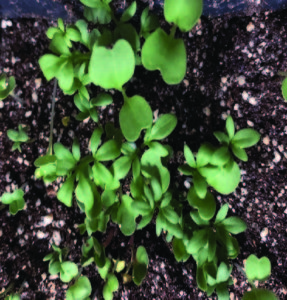Food Production: Micros in the winter
go.ncsu.edu/readext?645825
en Español / em Português
El inglés es el idioma de control de esta página. En la medida en que haya algún conflicto entre la traducción al inglés y la traducción, el inglés prevalece.
Al hacer clic en el enlace de traducción se activa un servicio de traducción gratuito para convertir la página al español. Al igual que con cualquier traducción por Internet, la conversión no es sensible al contexto y puede que no traduzca el texto en su significado original. NC State Extension no garantiza la exactitud del texto traducido. Por favor, tenga en cuenta que algunas aplicaciones y/o servicios pueden no funcionar como se espera cuando se traducen.
Português
Inglês é o idioma de controle desta página. Na medida que haja algum conflito entre o texto original em Inglês e a tradução, o Inglês prevalece.
Ao clicar no link de tradução, um serviço gratuito de tradução será ativado para converter a página para o Português. Como em qualquer tradução pela internet, a conversão não é sensivel ao contexto e pode não ocorrer a tradução para o significado orginal. O serviço de Extensão da Carolina do Norte (NC State Extension) não garante a exatidão do texto traduzido. Por favor, observe que algumas funções ou serviços podem não funcionar como esperado após a tradução.
English
English is the controlling language of this page. To the extent there is any conflict between the English text and the translation, English controls.
Clicking on the translation link activates a free translation service to convert the page to Spanish. As with any Internet translation, the conversion is not context-sensitive and may not translate the text to its original meaning. NC State Extension does not guarantee the accuracy of the translated text. Please note that some applications and/or services may not function as expected when translated.
Collapse ▲
image by Eli Snyder
Does winter have you craving fresh veggies? Are you looking for a way to use your seed starting area before you start garden transplants? If you answered “yes,” then consider growing microgreens indoors this winter.
Microgreens are baby greens harvested when the first true leaves emerge. They can be used as garnishes in soups, sandwiches, or other dishes. Many edible plants make excellent microgreens, including plants whose greens are not often consumed, such as carrots. Lettuces do not make good microgreens because they are too delicate. Common choices are broccoli, dill, basil, beets, and mustards. The flavors are often similar to the mature plant but tend to be more subtle, and the greens are more nutritious.
To grow your own, put soilless media from ½-inch to 1-inch deep into a sterile tray with drainage holes. Broadcast seeds across the entire tray or plant in rows and gently press into the media. Cover with a thin layer of media and keep them watered. Some harder seeds, like beets, will germinate more easily if they are soaked in water before sowing. Different plants used for microgreens vary in time from planting to harvest, but typically the process takes 7 to 21 days. It is easiest to sow only one cultivar in a tray. But if you would like variety, consider planting cultivars that germinate and reach harvest stage in the same amount of time. Pre-blended seed mixes are also available for purchase. Use a heat mat underneath the tray for more even germination. Consider using a grow light if you do not have a south-facing window with good natural light in winter.
To harvest, use clean scissors to cut the microgreens and gently scoop the harvested handfuls into a clean receptacle. Store them in the refrigerator in a plastic bag or clamshell until you are ready to enjoy them.
–Elina Snyder
Additional interesting articles are linked from the index
Extension Gardener Newsletter


